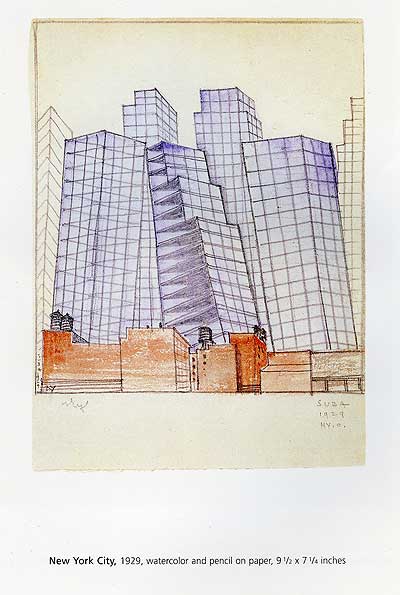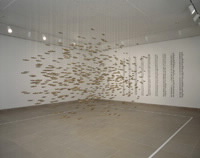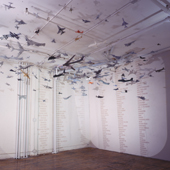View current page
...more recent posts
The US Senate is still scared of Bush even though the President's popularity numbers are in the low 30s. They can't even muster the votes for a toothless resolution on the Iraq War escalation, despite the clear will of US voters expressed last November. Supporting the troops means getting them out of there, you numbskulls, not letting Bush kill them. I believe I speak for the majority of Americans in saying, I don't trust Bush, why do you? (Answer: smear merchant Karl Rove has pictures of all of them in their underpants.)
A post from MyDD, minus the links, on the current Balkanized state of American cell phone networks, giving us a glimpse of a what a non-neutral Internet would resemble:
Matt's mentioned Tim Wu's most excellent paper on the American wireless scene twice now, but I don't think this horse is dead yet. Wu paints a nice -- and by "nice," I mean kinda horrifying -- picture of what an Internet missing the fundamental principle of neutrality might look like. Take, for example, the state of innovation in the cellular market. Here in the U.S., wireless carriers rule the roost. They control what phones hook up to their networks. Since equipment developers have to design for particular networks, carriers pretty much control their entry into the market. Carriers lock phones to their networks and cripple [them on] neat technologies like Bluetooth, wi-fi, and even call timers (so as not to have you compare your records to theirs). Couple that with no real standards for software development, and few people bother building exciting new cell phone apps. To get a snazzy new iPhone you have enter into a contract with AT&T/Cingular, which is roughly analogous to Apple telling you that your new MacBook won't go online unless you switch to Comcast. The way wireless works today, innovation is only tolerated if it benefits the carrier, not the consumer.
Wireline (you know, when phones have wires) is of course pretty different. Yeah, the landline phone companies once argued that it was technically necessary for theirs to be "totally unified" systems. But today we can hook up just about any device to a phone line -- like, say, a modem -- because we were smart enough to enshrine the idea of open networks into law.
Over at the Agonist, Ian Welsh has more on the American wireless landscape, written in sort of fairy tale prose. Whatever it takes. In convincing people of the dangers of a carrier-controlled Internet, I think we could do worse than to get them to reflect on their own personal experiences as cell phone consumers.

According to Grace Glueck (recently departed the Times because...why again, exactly?), Miklos Suba was a minor Precisionist whose specialty was Brooklyn cityscapes rendered fairly scrupulously. He wasn't a fantasist by any means. So what could have been happening in this picture, which will be shown at James Graham & Sons next month? Did buildings like this exist in 1929? Was the artist clairvoyant? These purplish towers could be the monster glass vanity projects lumbering into present-day Brooklyn.
A 2 MB GIF built from screen-captured stills of the image in the previous post is here. It's only 16 frames so not as complex, but it moves faster and might give Safari users an idea of what the grid looks like in Firefox/Netscape/IE. As I understand it Safari, alone among browsers, does not load animated GIFs in sync, so you get random clumps of synchronization depending on which GIFs load first. This would not be a desirable effect here. Safari also fuzzes out GIFs when you use HTML to scale them up, under the assumption that the only imagery ever used on the Web is photography, which benefits from smoothing. Why do Steve Jobs' designers hate lo-fi artists?
not intended for RSS readers
Update: A 2 MB GIF of this grid is here. See next post or comments.
Cat Bus YouTubes by Anthony Leslie (aka CatBus4U):
#1
#2
#3
#4
All are great--my neighbor Totoro meets Paper Rad meets your 3rd grade nephew with compression-mushed MSPaint pixels in lieu of vector graphics. And great sound. YouTube commenter Chuck2dun is stingy in his praise, however: "At second 'three' [of vid #4] where you have the cat turn its head INSIDE the unchanging head shape is very good. The effect is arresting. I also prefer the black and white to the color. Have you thought about using lower chroma colors?" (hat tip guthrie)
"Tesseract Ranch" [mp3 removed]
My contribution to the tech house genre. This is all live hardware sequenced (no overdubbing) with some EQ and reverb added after the fact.
Update: I substituted the "dry" mix of this--no EQ or reverb. The effects were "bodying up" the sound at the expense of some of the DSP nuances.
1987 - Chris Burden's All the Submarines of the United States of America

2006 - Fiona Banner's Parade

Thanks to Sally McKay for making me aware of Banner's collection of modeled fighter aircraft from all over the world, which will be shown soon in Toronto. It's the latest in our ongoing "attack of the clones" series.
Updated re: installation schedule.
